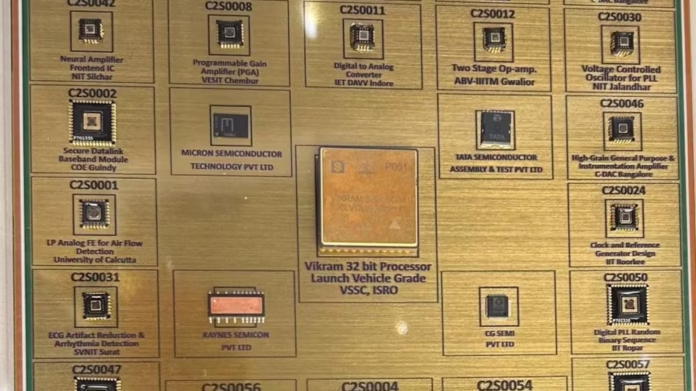In a defining moment for India’s technological sovereignty, Union IT and Electronics Minister Ashwini Vaishnaw today handed over the Vikram-32, India’s first fully indigenous 32-bit microprocessor, to Prime Minister Narendra Modi at the Semicon India 2025 summit.
The processor has been developed by ISRO’s Semiconductor Laboratory in Mohali and fabricated at its in-house facility. Vikram-32, also known as VIKRAM3201, represents India’s transition from being a consumer of semiconductors to becoming a creator in the global technology ecosystem.
The chip is space-qualified and mission-ready, having already cleared environmental tests during the PSLV-C60 mission. It comes with floating-point capabilities, a custom instruction set architecture, and support for Ada programming, with C language compatibility under development. ISRO has also built a complete toolchain including compiler, assembler, linker and simulator to support it.
Vikram-32 follows ISRO’s earlier VIKRAM1601, a 16-bit processor that has been in use since 2009. While originally designed for rockets and satellite launch vehicles where extreme reliability is essential, the processor is versatile and can also be deployed in defence systems, aerospace, automotive technologies and energy infrastructure.
The launch of Vikram-32 is part of India’s larger push under the India Semiconductor Mission launched in 2021. In just three and a half years, the government has approved ten major semiconductor projects worth more than ₹1.60 lakh crore across six states, begun construction of five semiconductor units, and supported 23 startups and innovators under the Design-Linked Incentive scheme to promote advanced chip design.
Addressing the conference, Prime Minister Modi said India is on its way to becoming a full-stack semiconductor nation, capable of design, fabrication, packaging and large-scale manufacturing. He noted that even the smallest chip designed in India has the potential to create a global impact.
The unveiling of Vikram-32 marks a milestone in India’s journey toward semiconductor self-reliance and positions the country as a trusted hub for future technologies.



